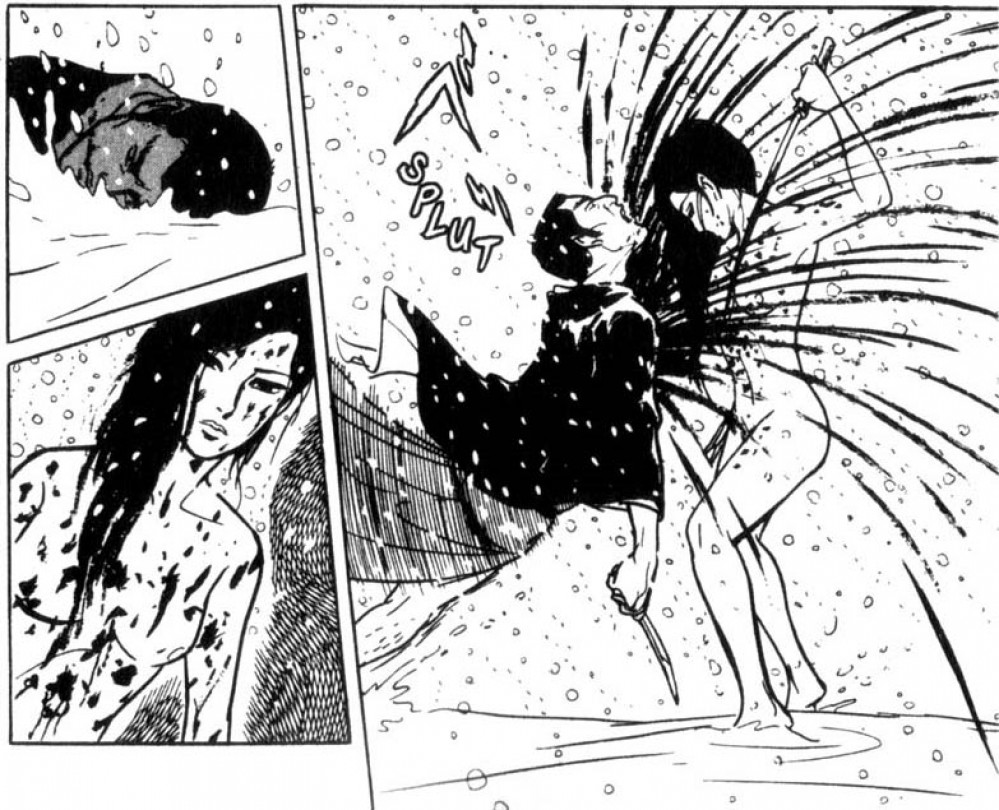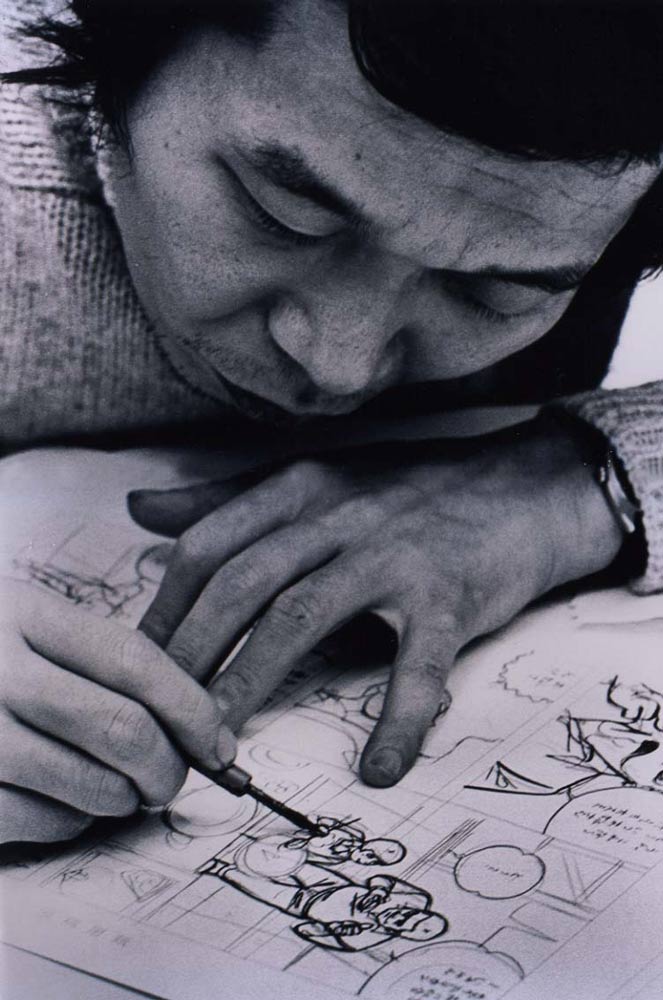Kazuo Kamimura was a Japanese manga creator, best known for his 1972-1973 collaboration with Kazuo Koike on the action manga 'Lady Snowblood' ('Shurayuki-hime'). This revenge tale starring a female assassin was adapted into film a year later, becoming a cult classic.
Early life and career
Kazuo Kamimura was born in 1940 in Yokosuka, Kanagawa, Japan. He studied design at the Musashino Art University and graduated there in 1964. Kamimura worked part-time as an illustrator at the advertising company Senkosya, where he got in touch with Mr. Yu Aku, a songwriter who wrote the script to his first comic strip, 'Kawaiko Sayurichan No Daraku' ('カワイコ小百合ちゃんの堕落', 1967), in the first issue of Gekkan Town. Next, he illustrated Yu Aku's script for 'Parada' ('パラダ', 1968), Kazuo Oike's 'Dosei jidai' ('同棲時代', 'Let Us Live Together', 1972) and 'Syurayukihime' and Hideo Okazaki's 'Hanakotoba' ('花言葉' , 1971) and 'Shinano-gawa' ('しなの川', 1973-1974). His work was published in magazines like Young Weekly Playboy, Weekly Manga Action and Big Comic.
'Folles Passions' (Kyōjin Kankei - 狂人関係, 1973-1974).
Lady Snowblood
Kamumura's most famous work remains 'Shurayuki-hime' ('修羅雪姫', Lady Snowblood, 1972-1973). The title is a pun on the Japanese name of fairy tale character 'Snow White' and the word "shura", which means "conflict". 'Lady Snowblood' is the tale of a female assassin, Yuki, whose mother was raped and father was murdered. She seeks revenge and goes on a long journey to track down each and every bandit responsible for these crimes. The manga was serialized in Weekly Playboy. One year later, it was adapted into a live-action film 'Shurayuki-hime' ('修羅雪姫', 'Lady Snowblood', 1973) by Toshiya Fujita, starring Meiko Kaji in the title role. The film quickly became a cult classic and spawned a sequel, 'Shurayukihime - Urami renka' ('修羅雪姫 怨み恋歌 ', 'Lady Snowblood 2: Love Song of Vengeance', 1974), by the same director, with Kaji reprising her role. In 2001, the manga inspired another live-action film, 'Shurayuki-hime' ('修羅雪姫', 'The Princess Blade', 2001), but the plot was changed into a more post-apocalyptic dystopian story.
'Lady Snowblood' reached a higher mainstream notability outside Japan when Hollywood director Quentin Tarantino used the theme song from 'Lady Snowblood' (1973) as an atmospheric musical piece for his epic martial arts film 'Kill Bill' (2003-2004). The song was also released on the official movie soundtrack. It was a deliberate homage on Tarantino's part, since the plots of both movies share similarities. Thanks to Tarantino's global popularity, 'Lady Snowblood' received more attention, motivating Dark Horse in 2005-2006 to release the first English-language translation of Kamamura's manga. Translations of Kamimura's other works soon followed. In 2009, Ed Brubaker, Marko Djurdjevic and Clay Mann created the character Lady Bullseye in Marvel's 'Daredevil' franchise as a tribute to Lady Snowblood.
'La Plaine du Kantō' (Kantō heiya - 関東平野, 1976). French-language version.
Final years and death
In 1974, Kazuo Kamimura voiced the character of Crosby in the anime film 'Jack to Mame no Ki' (ジャックと豆の木, 'Jack and the Beanstalk', 1974). His promising career was unfortunately cut short when he got sick with a pharynx tumor. He died at the young age of 45 on 11 January 1986. Two of Kamimura's assistants were Hitoshi Iwaaki and Jiro Taniguchi.






